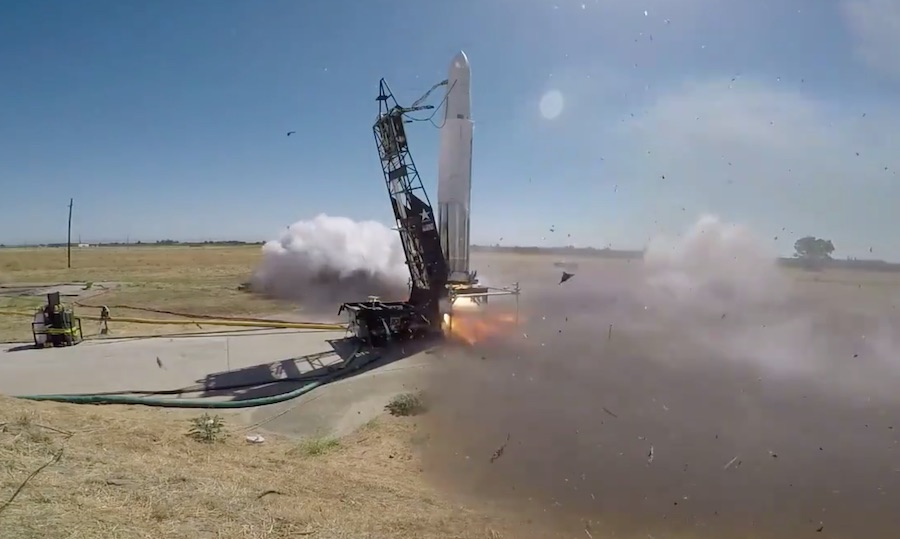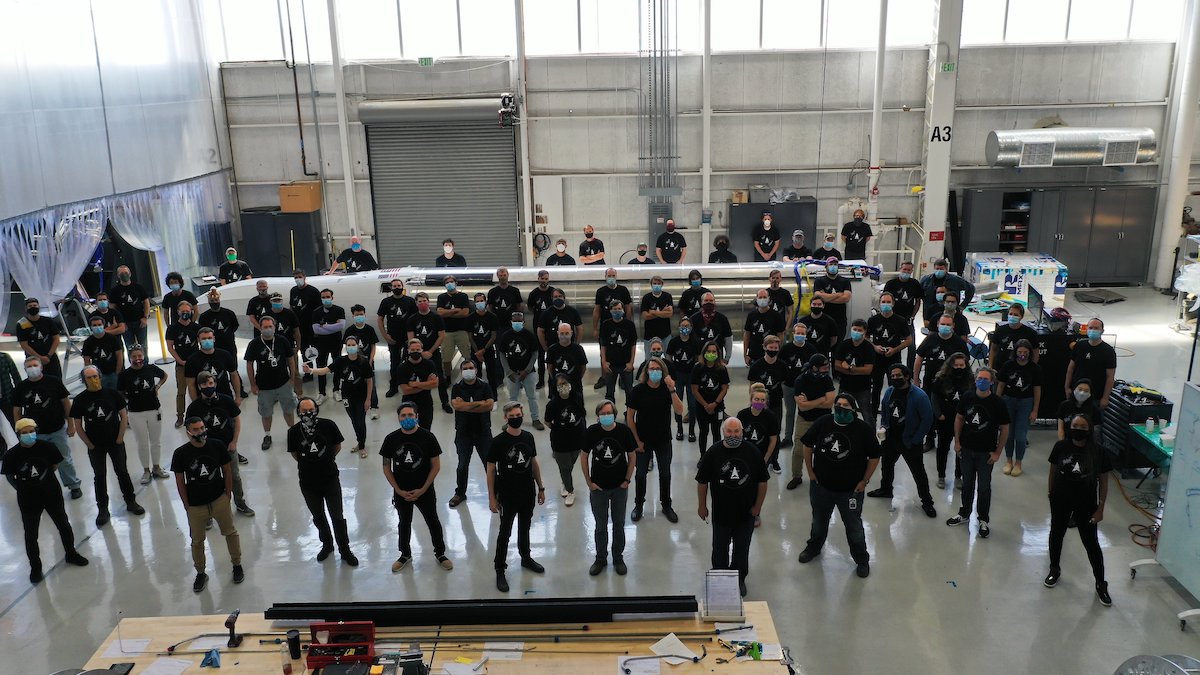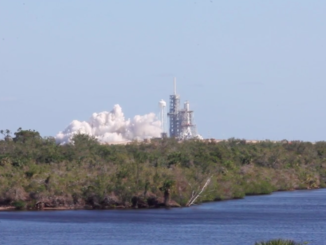
Astra’s next small satellite launcher has shipped to Kodiak Island in Alaska for final preparations ahead of a test flight planned in early August, five months after the company’s first orbital rocket faltered before getting off the ground.
The small launch company, headquartered in Alameda, California, announced Monday that the mission’s six-day launch window opens Aug. 2. Astra will have a launch opportunity between 3:30 p.m. and 7 p.m. EDT (1930 and 2300 GMT) each day.
The new two-stage launch vehicle, which the company calls Rocket 3.1, will take off from the Pacific Spaceport Complex on Kodiak Island. While the liquid-fueled rocket is designed to reach orbit, Astra says it will consider the test flight a success even it doesn’t enter orbit.
“Success for this flight means we accomplish enough to make orbit within three flights, which we have defined as at least achieving a nominal first stage burn,” Astra said in June.
Chris Kemp, Astra’s co-founder and CEO, said the company will not be providing a live video stream of the launch to the public, but will release video imagery of the flight after it occurs.
“We do not yet employ production, marketing, or communications folks, so our ability to produce a public webcast is limited,” Kemp said in response to questions from Spaceflight Now. “We are focusing all resources on engineering so that we can reach orbit in the next couple of flights.”
The design of Rocket 3.1 is based on a launch vehicle Astra sent to Kodiak earlier this year for a launch campaign that was part of the Defense Advanced Research Projects Agency’s Launch Challenge. The DARPA Launch Challenge, managed by the Pentagon’s research and development agency, was conceived to incentivize development of new responsive commercial U.S. launch systems.
DARPA offered up to $12 million prize money to a company that demonstrated its ability to launch a small payload to low Earth orbit on short notice, then perform the same feat from a different launch pad less than a month later.
The deadline for the first of two Astra missions under DARPA’s Launch Challenge was March 2. After several weather delays and other schedule slips in late February, Astra fueled its Rocket 3.0 vehicle on an austere launch pad at Kodiak on the final day of the challenge March 2.
But Astra scrubbed a launch attempt due to suspect data detected from the rocket’s guidance, navigation and control system.
The March 2 launch attempt was streamed live on Internet, but that production was managed by DARPA, not Astra.

Astra was set to try again to launch Rocket 3.0 from Kodiak later in March outside the realm of the DARPA Launch Challenge, but the vehicle “experienced an anomaly” during pre-flight testing on the launch pad, Kemp said at the time.
Satellite imagery of the launch facility on Kodiak Island showed burn scars, suggesting the rocket may have exploded or caught fire. Kemp said no payloads were on-board the rocket during the accident.
Founded in 2016, Astra operated in stealth mode until earlier this year.
The company says its rockets can launch with a small crew, requiring just days to set up a portable launch pad.
The rocket itself, which measures 38 feet (11.6 meters) long, can fit into a standard shipping container and be towed by truck. Earlier this year, Astra officials said the Rocket 3.0 vehicle was designed to carry up to 55 pounds (25 kilograms) of payload into a sun-synchronous polar orbit — enough to loft a cluster of tiny nanosatellites for the U.S. military, NASA, or commercial customers.
Astra says it is building up a capability to mass-produce rockets that can be shipped to launch sites anywhere in the world, along with the company’s own mobile launch pad and ground support equipment. In the DARPA Launch Challenge earlier this year, Astra proved it could set up its launch infrastructure on a bare launch pad in a matter of a couple of weeks.
“Rapid test and iteration are the cornerstones of our development process,” Astra says on its website. “We’ve performed thousands of rocket engine tests at our headquarters in Alameda, a few hundred feet away from where those engines are designed and built. We can afford to experiment quickly and repeatedly because our rockets are far less expensive. The rockets are primarily constructed from lightweight aluminum, instead of costly composite and 3D printed materials.
Last month, the U.S. Defense Department announced intentions to award small satellite launch contracts to six companies, including Astra, using funds appropriated to help stabilize the defense industrial base amid the coronavirus pandemic.
But the military withdrew the procurement notice July 1 after shifting the funding toward small business loans, Space News reported earlier this month.
Email the author.
Follow Stephen Clark on Twitter: @StephenClark1.



